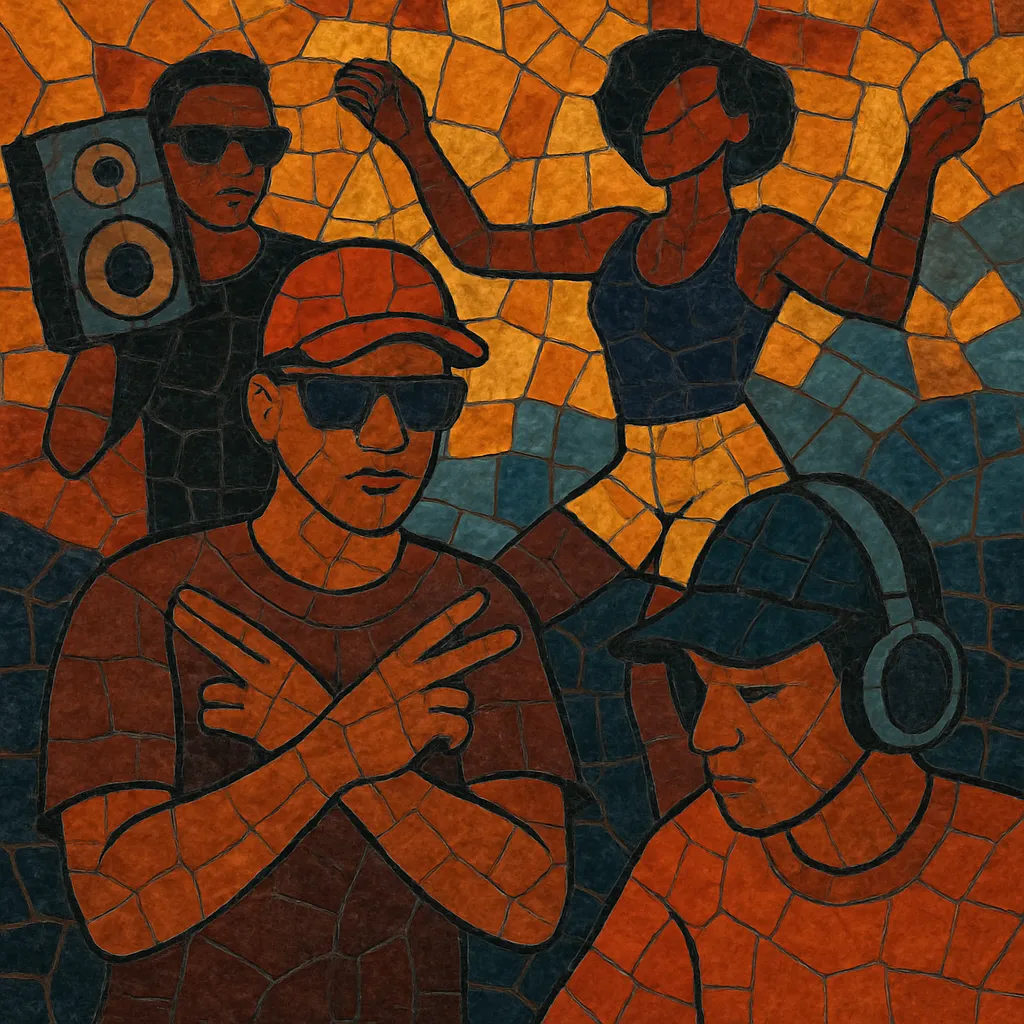Funk mandelão is a minimalist, hard‑hitting branch of Brazilian funk that crystallized in São Paulo’s street party (fluxo) scene. It emphasizes a stripped, percussive groove with booming sub‑bass, clipped toms and rims, and shouted call‑and‑response vocals that command the dancefloor.
Compared with Rio’s tamborzão-driven funk carioca, mandelão tends to sit a bit slower and heavier, favoring hypnotic repetition, stark spaces, and gritty saturation (“estouro”) that translates well on massive, bass-heavy sound systems. Producers often recycle short vocal chops and neighborhood shoutouts, building tension through micro-variations in drums, drops, and crowd‑engaging breaks.
Funk mandelão grew out of São Paulo’s interpretation of Brazilian funk in the 2010s, particularly the culture of street "fluxos" in the city’s periphery. While Rio de Janeiro’s funk carioca set the national template (itself rooted in Miami bass and electro), São Paulo artists pushed a leaner, heavier, and more repetitive beat geared to massive PA stacks and outdoor parties.
A widely circulated percussion template often referred to as "Beat do Mandela" helped codify a signature São Paulo groove: clipped toms/rims, simple kick patterns, and call-and-response vocal chops. Producers then exaggerated the low end, slowed the feel, and embraced saturation, yielding the darker, pounding character recognized as mandelão.
Through the late 2010s and into the 2020s, mandelão became a go-to sound for fluxos and viral dance challenges. Labels, YouTube channels, and social platforms amplified the scene, while producers refined a club‑ready minimalism: long sections built from tiny drum edits, crowd commands, and short, impactful hooks.
Mandelão’s stark percussion and sub‑bass presence informed newer Brazilian club mutations, from darker “funk bruxaria” textures to hybrid trap‑funk and more distorted club styles. Its loop-driven architecture also seeped into global producers seeking raw, body‑moving minimalism.


